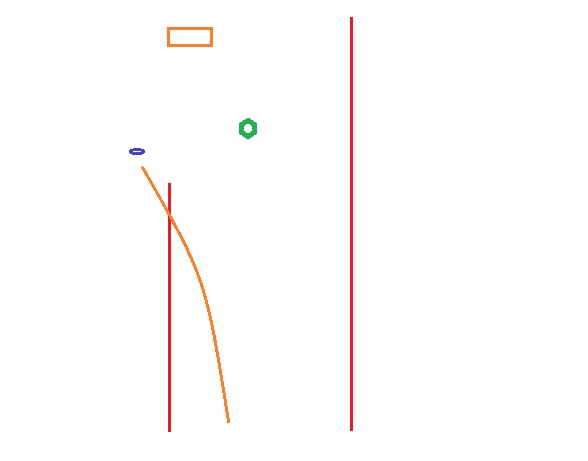ScottyLove
Double Eagle Member
This situation came up a few weeks back at a PDGA tournament...
First, the OB lines are incorrect as you can just have one stop without connecting to another OB area or back to itself, but unfortunately I see this kind of thing often. This was a long 660 ft hole wil OB line down both sides, but the left side just abruptly ended near the basket. I'm sure because the next tee pad was nearby. THe lines are actually above the ground using wires suspended in the trees, so it was easy to tell that the flight of the disc crossed the OB line before it end at a tree.
But the disc was cleary beyond the tree giving the player a putt at the basket. He played the original lie and a provisional from where it crossed the line which was the correct thing to do of course. The question is, was the disc OB or not?? Some veteran folks said the line extends into infinity even though not marked. Some said as long as it came to rest past the end of the line, it's in. I think it's clear the inention of the designer was for it to be OB, but without a line, I think you have to call it in... which the TD did. LESSON: TDs should line OB properly!

First, the OB lines are incorrect as you can just have one stop without connecting to another OB area or back to itself, but unfortunately I see this kind of thing often. This was a long 660 ft hole wil OB line down both sides, but the left side just abruptly ended near the basket. I'm sure because the next tee pad was nearby. THe lines are actually above the ground using wires suspended in the trees, so it was easy to tell that the flight of the disc crossed the OB line before it end at a tree.
But the disc was cleary beyond the tree giving the player a putt at the basket. He played the original lie and a provisional from where it crossed the line which was the correct thing to do of course. The question is, was the disc OB or not?? Some veteran folks said the line extends into infinity even though not marked. Some said as long as it came to rest past the end of the line, it's in. I think it's clear the inention of the designer was for it to be OB, but without a line, I think you have to call it in... which the TD did. LESSON: TDs should line OB properly!